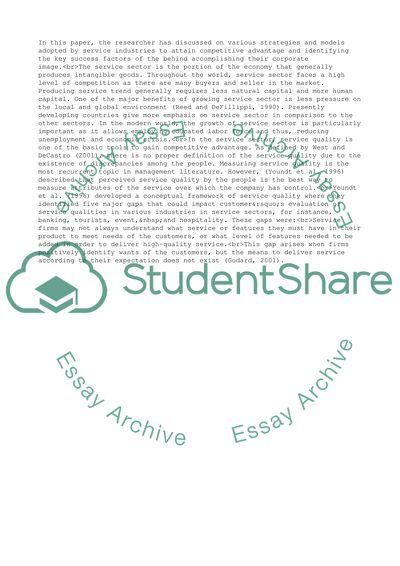Cite this document
(“Contemporary Scenario of Service Industry Essay”, n.d.)
Contemporary Scenario of Service Industry Essay. Retrieved from https://studentshare.org/business/1661701-with-reference-to-examples-drawn-across-the-service-environment-critically-compare-and-contrast-the-ways-in-which-different-sectors-have-sought-to-create-a-position-of-competitive-advantage
Contemporary Scenario of Service Industry Essay. Retrieved from https://studentshare.org/business/1661701-with-reference-to-examples-drawn-across-the-service-environment-critically-compare-and-contrast-the-ways-in-which-different-sectors-have-sought-to-create-a-position-of-competitive-advantage
(Contemporary Scenario of Service Industry Essay)
Contemporary Scenario of Service Industry Essay. https://studentshare.org/business/1661701-with-reference-to-examples-drawn-across-the-service-environment-critically-compare-and-contrast-the-ways-in-which-different-sectors-have-sought-to-create-a-position-of-competitive-advantage.
Contemporary Scenario of Service Industry Essay. https://studentshare.org/business/1661701-with-reference-to-examples-drawn-across-the-service-environment-critically-compare-and-contrast-the-ways-in-which-different-sectors-have-sought-to-create-a-position-of-competitive-advantage.
“Contemporary Scenario of Service Industry Essay”, n.d. https://studentshare.org/business/1661701-with-reference-to-examples-drawn-across-the-service-environment-critically-compare-and-contrast-the-ways-in-which-different-sectors-have-sought-to-create-a-position-of-competitive-advantage.


